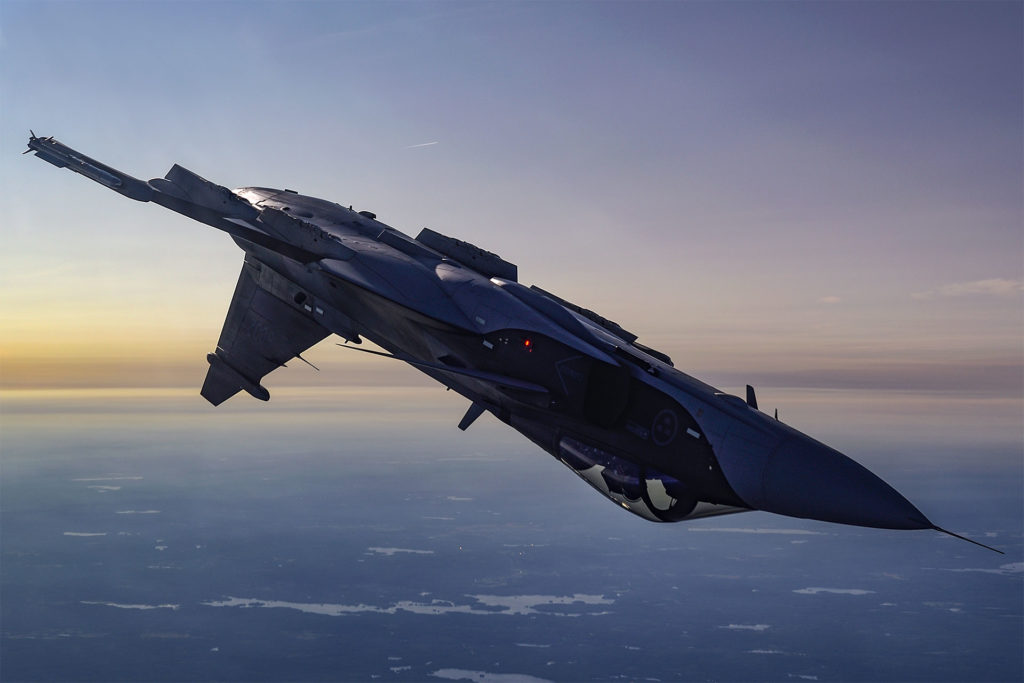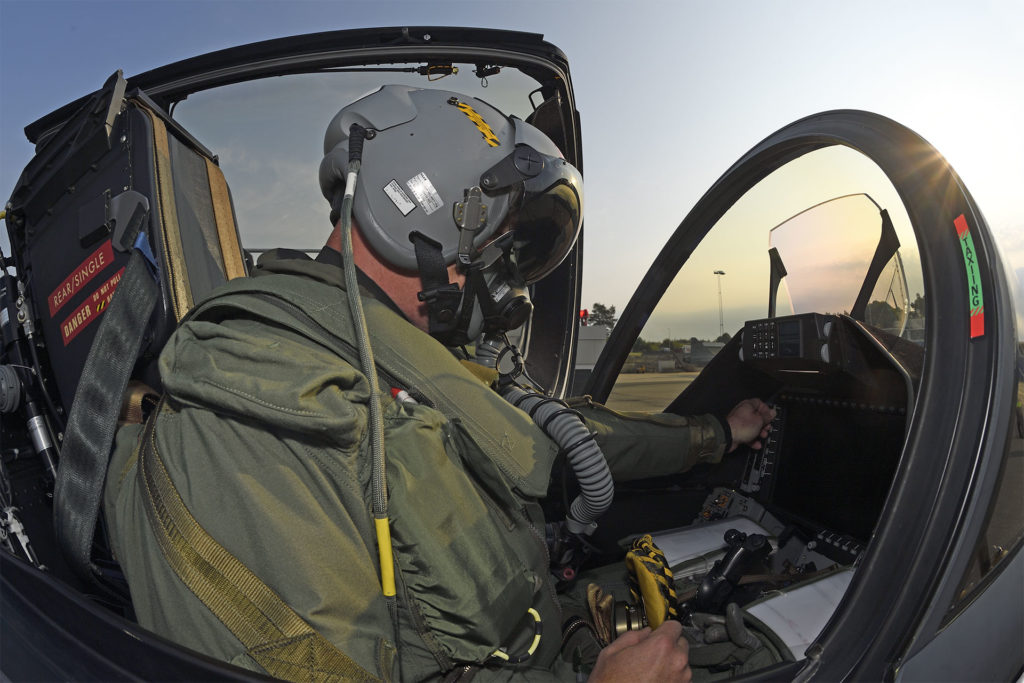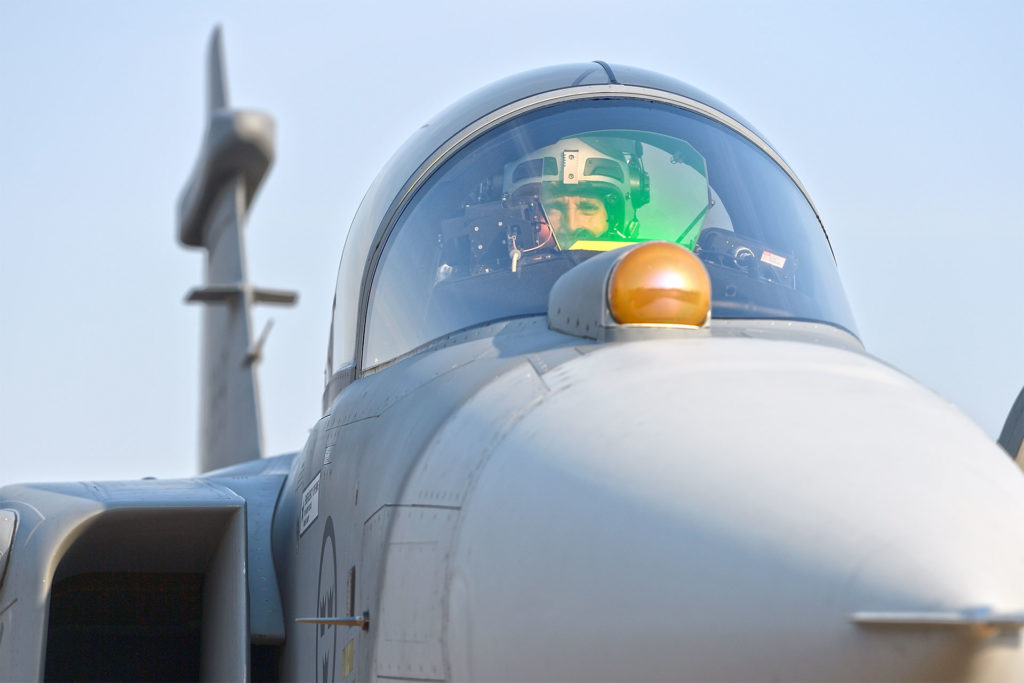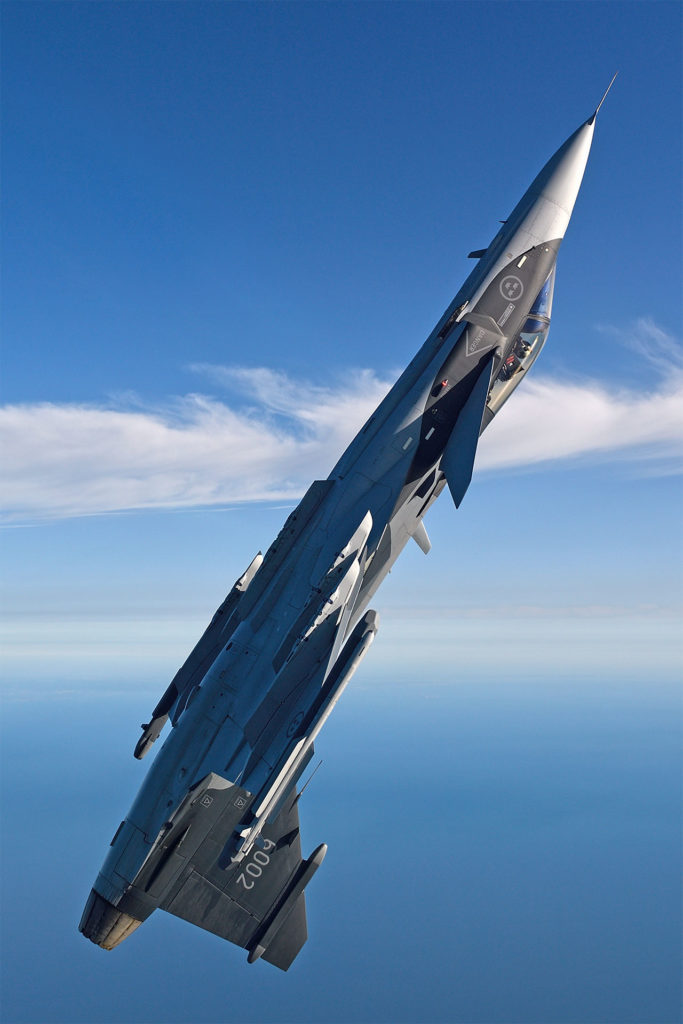Avatar
BY JAMIE HUNTER | JANUARY 12, 2021
Estimated reading time 14 minutes, 12 seconds.
“Gripen E meets and/or exceeds all of the Canadian requirements. It’s an efficient, modern fighter, and it’s the latest development on the market.” So says Anders Håkansson, Saab’s deputy campaign director for the company’s participation in Canada’s Future Fighter Capability Project (FFCP).
Canada’s protracted search for a new fighter aircraft to replace its aging McDonnell Douglas CF-188 Hornets has narrowed to a field of three competitors. The U.S. manufacturing giants of Boeing and Lockheed Martin are respectively offering the F/A-18E/F Super Hornet and the F-35A Lightning II, with Sweden completing the trio with Saab’s latest incarnation of Gripen — the single-seat E variant.

While Saab is often cited as an excellent model for cost-effectiveness — company marketing literature refers to Gripen E as “the smart fighter” — actual capability is sometimes overlooked. So, does Gripen E have the requisite muscle to give the U.S. heavyweights a run for their money in this important campaign?
The Canadian Requirement
The complex saga of the Royal Canadian Air Force’s (RCAF’s) CF-188 recapitalization project includes Canada becoming a partner in the multinational F-35 program back in 1997. This enabled Canadian industry to gain a foothold in the global supply chain for the stealthy fighter, and Canada ultimately planned to purchase 65 F-35As. But the then-Prime Ministerial candidate Justin Trudeau pledged to overturn the F-35 deal — forcing a competition rather than a straight, non-competed acquisition of Lightning IIs.
Fast-forward to July 31, 2020, and formal responses to a request for proposal were submitted to Ottawa by the three remaining interested parties in the FFCP. The Eurofighter Typhoon and Dassault Rafale had already withdrawn from the race, making this a three-way chase for the prized contract.
The $11 to $15 billion FFCP calls for 88 fighters to be procured through an open competition, with the aircraft required to enter service from 2025 and be sustained to around 2060. Canada will select a winner by late 2021 using a formula that assigns 20 per cent to industrial offsets, 20 per cent to cost, and the remaining 60 per cent to overall capability.
As the sole non-U.S. candidate, Sweden’s Saab appears to be an outsider — maybe even a stalking horse. However, Saab is heavily committed to Canada with a strong, but understated, offering that shouldn’t be underestimated.

While Gripen E’s moniker aligns it with the lineage and ethos of its Gripen A-D predecessors as capable but “affordable” fighters, the E is a very different beast in many ways. With seven aircraft now in various stages of flight-testing, one aircraft now at its Brazilian test centre, and initial deliveries to the Swedish Air Force planned for 2023, Gripen E’s program is gaining momentum.
Gripen E is a subtly beefed-up variant of the original Gripen in terms of airframe, but under the surface it couldn’t be more different. With 10 external hardpoints, Gripen E can carry up to seven MBDA Meteor beyond visual range air-to-air missiles — a weapon that has been eyed enviously by the U.S. in comparison to its AIM-120 Advanced Medium-Range Air-to-Air Missile (AMRAAM).
Combined with the Leonardo ES-05 Raven radar, it gives Gripen E impressive detection and engagement ranges. On top of the nose sits a Leonardo Skyward G infrared search and track (IRST) sensor for passive tracking and targeting.
The cockpit features an 18-by-nine-inch-wide area touch screen display, and the pilot operates in an immersed world of fused data that is constantly updated via a fighter-to-fighter data link — as well as connectivity to other agencies via Link 16. Sweden has been working in this connected world for decades, reaching way back into the era of Saab’s Viggen fighter.
Meeting the Canadian Requirement
According to Håkansson, Saab’s assessment is that Gripen and its offer to Canada meets and/or exceeds all of the stated requirements, including meeting Canada’s obligations under the North American Aerospace Defense Command (NORAD) mission of providing air defence for Canada and the U.S. Though program officials cannot reveal the exact parameters, which remain classified.
The geographic scale of Canada must mean that range and endurance are two significant factors. With a 40 per cent growth in internal fuel capacity, Saab has clearly set out to address any perceived shortcomings of the earlier Gripens.

“Part of the reason we developed Gripen E was with range and endurance in mind — plus the more powerful F414 engine and other modifications,” said Håkansson.
One of the aces up Gripen E’s sleeve is its electronic warfare system. It’s completely new and provides what Saab refers to as a “digital shield.”
“The idea was not to build a geometrically stealth aircraft that would be obsolete long before the life expectancy of the fighter, due to continuously and exponentially growing new technologies that target geometrically stealth aircraft,” explained Håkansson. “We added an EW system that solves the issue electronically, and that will continue to develop exponentially because no one knows what threats are evolving.”
The embedded system combines active and passive systems to help protect the aircraft, which is cleverly combined with a 360-degree spherical missile approach warning system. “We have an airframe that is stressed for 8,000 hours . . . and Gripen E has the most advanced sensor fusion,” he said. “You can put the aircraft into an automatic mode and it suggests almost everything to the pilot so they can concentrate on the big picture, as well as the details.”
Don’t Judge a Book by its Cover
“The jewel in the crown is our avionics system — and that you cannot debate. No one else has that,” declared Håkansson.
Saab’s Johan Segertoft led a team that masterminded Gripen E’s revolutionary agile avionics architecture, which is attracting huge interest from other aerospace manufacturers. Saab set out to build a system that acknowledged computer technology is advancing like never before, with a mindset of embracing exponential growth in software code.

“Gripen E is the vessel that will bring you to the fight,” explained Segertoft. “The computer power is what will win and take the pilot home.”
He asserted Gripen E’s avionics design is truly unique, already realizing the type of agile performance desired by U.S. manufacturers. Saab’s approach has been explained as being akin to applications on a smartphone, where the operator tailors applications to their own preferences and without regard to hardware considerations that otherwise would slow the implementation. This means customers can design and develop their own software, enabling rapid introduction of new technologies and systems to deal with ever-evolving threats.
Explaining traditional avionics architecture, Segertoft said: “To solve an upgrade requirement, the operator today buys a new piece of equipment, such as a new radar, bolts it onto the aircraft and puts a new screen in the cockpit.”
To further explain this approach to upgrades, he used the analogy of buying an iPhone, but to get a new application on it you have to send it back to Apple and wait for three to five years to get it back! However, that is the legacy approach to complex integration issues in a highly regulated world. Safety in the aeronautical industry drives enormous cost.
While most modern avionics systems separate safety-critical elements from the tactical side, Gripen E has harnessed the ability to take both and run them seamlessly as onboard computers are upgraded. This allows Gripen E to immediately benefit from the exponential increase in computing capacity.
Saab said between the first flight of the prototype Gripen E (serial 39-8) on June 15, 2017, and the first flight of the second aircraft (39-9) on Nov. 26, 2018, all of the onboard computers were changed to upgraded systems providing more computer power.

“Changing computers like this is typically calculated in years — we measure it in days,” explained Segertoft. “We changed hundreds of software components — 40 per cent of which were certified to the highest level — all without compromising airworthiness. Our vision has always been coding in the morning and flying it in the afternoon, and we are very pleased with where we are.”
This philosophy makes it easy to add, delete, and modify coding, or to include third-party or partner involvement. Brazil, the first export customer for Gripen E, is already developing software and feeding it back into the main development program in Sweden.
Patrick Palmer, Saab’s executive vice-president of marketing and sales in Canada, said: “The avionics are a unique feature that we have created through years of engineering work. We are now offering Canada the sovereign capability . . . to sustain, upgrade, and enhance through the whole life of the fighter.
“This is not just about aircraft performance; you also have to be able to upgrade the aircraft under specific rules and regulations. We have designed the weapons suite [offered in FFCP] to meet Canadian requirements, but there are many options we can offer in future — any weapon on the market — and our avionics make it really easy to integrate them.”
Capable and Affordable?
Not only does Gripen E offer impressive features, but Saab also said the aircraft has the lowest associated maintenance costs. “It has been designed into the aircraft from day one, it was a driving factor,” said Håkansson.

The aircraft is designed to be serviced and turned around by a small team, even in austere locations. Referring to operations in Arctic conditions, Håkansson said Gripen was “born in the snow.”
Saab has a proven track record when it comes to local industry participation and offset agreements. It has formed a Canadian industrial team combining IMP Aerospace and Defence, CAE, Peraton Canada and GE Aviation. “To build, sustain, and upgrade in Canada is something we have solved through our avionics system and with Canadian employees,” said Håkansson. “The focus of our business is that we will bring a lot of new business through high value Canadian jobs that will further Canada in its knowledge.”
Clark Bain, senior VP of strategic development at IMP, said: “The relationship we have with Saab… they are very open to transferring genuine knowledge. For IMP, not only are we going to build Gripen in Canada, we’re also going to get the benefit of all that technology and knowledge transfer.
“This is going to be the first time in generations a fighter will have been built in Canada. Saab has a network of partners and suppliers across the country, so certain parts will be manufactured within the country, and then we will assemble the aircraft, support the integration activity, and initial flight trials. In terms of final assembly and integration tests, that’s all happening in Canada.”

IMP will absorb this knowledge so it can manufacture and support the aircraft through their life. IMP already has a close and longstanding relationship with the RCAF, and it expects to continue this theme if Gripen is selected for Canada — spearheading the sustainment of the aircraft and the sovereign control in Canada.
“When this competition first came about, we looked at which teams we may want to join,” said Bain. “It was pretty clear to us that easily the best value for Canada was going to be Gripen, and now COVID-19 means affordability is even more important.”
While Saab cannot to go into detail, its existing relationship with Brazil as the first export customer for Gripen E is a good indicator of what it has offered to Canada. Brazil has genuine, close involvement and is spearheading development and manufacturing of the two-seat Gripen F.
For Canada, the evaluation process for its new fighter is expected to continue into 2021, with an award sometime in 2022 — in time for deliveries from 2025. Despite Canada’s obvious political pressure to buy an F-series fighter from its neighbour, Gripen offers a compelling case to meet the country’s needs and boost industrial know-how.


